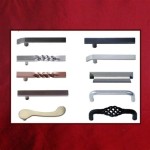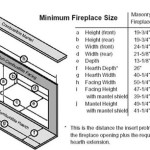Changing a Gas Fireplace to a Wood Burning Stove: A Comprehensive Guide
Converting a gas fireplace to a wood burning stove is a significant home improvement project requiring careful planning, adherence to local regulations, and a thorough understanding of the technical aspects involved. The decision to undertake such a conversion is often driven by a desire for increased heating efficiency, the ambiance of a real wood fire, or a combination of both. This article provides a detailed overview of the process, including considerations for feasibility, safety, installation, and maintenance.
Before initiating any work, it is crucial to assess the existing gas fireplace and its surrounding structure to determine if it is suitable for conversion. A gas fireplace typically utilizes a smaller flue and firebox than a wood burning stove requires. Therefore, modifications are almost always necessary. Furthermore, homeowners must verify local building codes and regulations to ensure compliance with safety standards and obtain the necessary permits.
Assessing Feasibility and Structural Requirements
The existing chimney is a primary consideration. Gas fireplaces often use smaller diameter vents, such as B-vent, which are not designed to withstand the high temperatures and corrosive byproducts of wood combustion. A proper wood burning stove requires a chimney rated for wood burning, typically a Class A chimney, which is double-walled and insulated to handle the intense heat and prevent creosote buildup. The existing chimney may need to be relined with a stainless steel liner of appropriate diameter to meet these requirements.
The firebox itself must also be evaluated. Gas fireplaces are constructed with materials that may not be fire-resistant enough for the intense heat of a wood fire. The existing firebox may need to be reinforced or replaced with a fire-rated material, such as firebrick. Furthermore, the opening of the fireplace may need to be altered to accommodate the dimensions of the chosen wood burning stove.
The hearth also requires careful consideration. The hearth must be of adequate size and constructed of non-combustible materials to protect the surrounding floor from sparks and embers. Local building codes typically specify the minimum dimensions of the hearth extension, which can vary depending on the stove's size and design. If the existing hearth is insufficient, it must be extended or replaced.
Load-bearing capacity is another vital factor. Wood burning stoves can be heavy, and the floor beneath the fireplace must be able to support the added weight. If the existing floor is not structurally sound, reinforcement may be necessary.
Navigating Regulations and Obtaining Permits
Municipalities and counties have specific regulations regarding the installation of wood burning stoves. These regulations are primarily designed to ensure safety and reduce air pollution. Before commencing any work, it is essential to contact the local building department and obtain the necessary permits. The permitting process typically involves submitting detailed plans of the proposed installation, including the stove's specifications, the chimney system, and the hearth design.
Building codes often dictate the minimum clearances required between the stove and combustible materials, such as walls and furniture. These clearances are designed to prevent fires and must be strictly adhered to. The stove manufacturer's instructions will specify the required clearances for their particular model, and these instructions should be followed diligently. Deviation from these instructions can result in fire hazards and invalidate insurance coverage.
In some areas, there may be restrictions on the type of wood that can be burned, as well as regulations regarding emissions from wood burning stoves. Some municipalities may require the use of EPA-certified stoves, which are designed to burn wood more efficiently and produce fewer emissions. It is crucial to understand and comply with all local regulations to avoid fines or penalties.
The permitting process may also involve inspections by local building officials. These inspections ensure that the installation meets all applicable codes and regulations. It is essential to schedule these inspections at the appropriate stages of the project, as specified by the building department. Failing to obtain the necessary inspections can result in delays and additional costs.
Installation Process: A Step-by-Step Guide
The installation process involves several key steps, each of which must be performed carefully and accurately to ensure a safe and efficient installation. It is highly recommended that a qualified and certified installer be hired to perform this work, as improperly installed wood burning stoves can pose significant safety risks.
The first step is to remove the existing gas fireplace. This involves disconnecting the gas line and removing the unit from the firebox. The gas line must be capped off by a qualified gas technician to prevent leaks. The firebox should then be cleaned and prepared for the installation of the wood burning stove.
Next, the chimney liner must be installed. This involves inserting a stainless steel liner down the existing chimney and connecting it to the stove's flue collar. The liner should be properly insulated to prevent heat loss and reduce creosote buildup. The top of the chimney should be fitted with a chimney cap to prevent rain and debris from entering the chimney.
The wood burning stove can then be positioned on the hearth. Ensure that the stove is level and securely placed. Connect the stove's flue collar to the chimney liner using appropriate connectors and clamps. All connections should be airtight to prevent smoke from escaping into the room.
Once the stove is connected to the chimney, verify that it meets all required clearances from combustible materials. If necessary, install heat shields to reduce clearances and protect nearby walls. The stove should be tested by burning a small fire and monitoring the draft and flue temperature. Ensure that the smoke is venting properly up the chimney and that there are no leaks.
Finally, ensure proper ventilation in the room. Wood burning stoves consume oxygen, and it is essential to have adequate ventilation to prevent carbon monoxide buildup. Install a carbon monoxide detector in the room to provide an early warning of dangerous levels of carbon monoxide.
Safety Considerations and Maintenance
Safety is paramount when operating a wood burning stove. It is essential to follow all safety guidelines and precautions to prevent fires and carbon monoxide poisoning. Never leave a wood burning stove unattended while it is burning. Keep combustible materials away from the stove and the hearth.
Regular maintenance is crucial for ensuring the safe and efficient operation of a wood burning stove. The chimney should be inspected and cleaned at least once a year, or more frequently if necessary. Creosote buildup in the chimney can create a fire hazard. A qualified chimney sweep can inspect and clean the chimney to remove creosote and other debris.
The stove itself should also be inspected regularly. Check for cracks or damage to the firebox, door seals, and flue connections. Replace any worn or damaged parts promptly. Remove ashes from the firebox regularly to maintain proper airflow and combustion efficiency. When removing ashes, ensure they are placed in a metal container with a lid and stored away from combustible materials.
Burn only seasoned firewood in the stove. Unseasoned wood contains high levels of moisture, which can create excessive smoke and creosote buildup. Seasoned wood should be dried for at least six months before burning. Store firewood in a dry, well-ventilated area away from the house.
Educate all household members on the proper operation and safety precautions associated with wood burning stoves. Emphasize the importance of never using flammable liquids to start a fire and always keeping a fire extinguisher nearby. Regular practice of fire safety procedures can help ensure a safe and enjoyable wood burning experience.

Can You Convert A Gas Fireplace To Wood Burning Stove Direct Stoves Resources

Want To Convert Gas Wood Fireplace Full Service Chimney

Converting A Fireplace To Wood Burning Stove Chesneys

Want To Convert Gas Wood Fireplace Full Service Chimney
Converting A Wood Burning Fireplace Into Gas Heat Glo

Should You Change Or Convert Your Wood Fireplace

Convert From Wood To Gas With A Insert The Kernel Burner

Converting Open Fire To A Wood Burning Stove In Exeter Simon Turner Showrooms Devon

Do You Want To Replace Your Gas Fire With A Woodburner
Can I Convert My Wood Burning Fireplace To Gas Woodlanddirect Com
Related Posts








